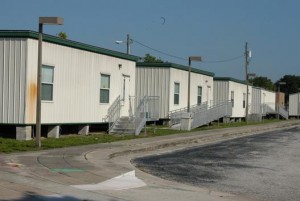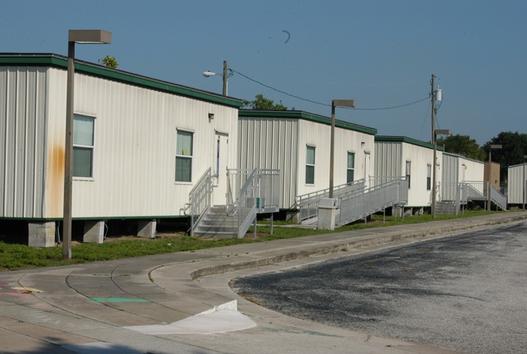
Temporary classroom structures are a valuable tool for facility administrators in public school districts. Unfortunately, reliance on mobiles can lead to long term cost issues and impact safety and security programs.
1. How many are there and how long have they been in place? Descriptive terms like “temporary”, “mobile” and “portable” may not apply. Sort the list of mobile units at your school district by age. You may be surprised how many were placed into use as far back as the 70’s and the 80’s.
2. What is the current capacity and utilization of permanent school facilities? Student assignment policies heavily impact the need for “temporary” classrooms. School Boards often avoid or delay redistricting resulting in overcrowded schools and underutilized schools sometimes being in close proximity to each other.
3. What is the “core” capacity of the school? The cafeteria, gymnasiums, auditoriums, media centers, and administrative offices are designed to accommodate a specific number of students. Adding “temporary” classrooms becomes disproportionate to the main building creating bottlenecks, efficiency and safety issues.
4. What are the total costs of acquiring, installing, and maintaining “temporary” classrooms? Mobiles are required to meet building codes and ADA accessibility requirements. Along with standard utility connections for heating, air conditioning, lighting, water and sewer, they also must be tied into fire and security alarms, intercom communications, and classroom technology systems.
5. In response to tragedies that occurred in New Town, Connecticut and Moore, Oklahoma, school districts are looking for ways to control visitor access and reduce vulnerability.


Leave a Reply